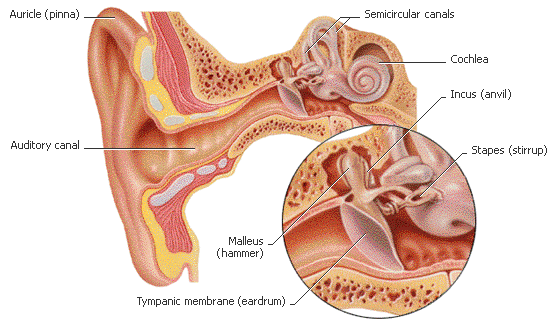
Over 5% of the world’s population has disabling hearing loss
WHO estimates that 360 million people have disabling hearing loss. It assists countries to develop programmes for primary ear and hearing care that raise awareness, provide support and technical guidance to health care workers and promote social inclusion for people with hearing loss.
WHO estimates that over 5% of the world’s population – 360 million people – has disabling hearing loss. The highest prevalence is found in the Asia Pacific, South Asia and sub-Saharan Africa. About half of all cases of hearing loss worldwide are easily prevented or treated.

A leading cause for hearing loss in younger ages, particularly in low- and middle-income countries, is untreated ear infections, which often presents with discharge from the ear. Vaccine-preventable infectious diseases such as rubella, meningitis, measles, or mumps can also lead to hearing loss.
Just 32 of the 76 countries who responded have developed plans and programmes to prevent and control ear diseases and hearing loss. According to the report, many lack trained health personnel, educational facilities, data and national plans to address the needs of those living with ear and hearing problems. The information received also indicates that the gap between need and services is greatest in sub-Saharan Africa.
“The results of this survey are a clear call to action for governments and partners to invest in hearing care especially at community and primary level,” says Dr Etienne Krug, Director of the WHO Department of Violence and Injury Prevention and Disability. “The programmes must aim to benefit all, including disadvantaged parts of the population who are least able to access hearing services.”
Prevention and treatment of hearing loss at primary level
 Good ear care practices, such as reducing exposure to noise and avoiding insertion of objects into the ears, can prevent many from developing ear and hearing problems. A large percentage of people living with hearing loss can benefit from early identification and appropriate treatment.
Good ear care practices, such as reducing exposure to noise and avoiding insertion of objects into the ears, can prevent many from developing ear and hearing problems. A large percentage of people living with hearing loss can benefit from early identification and appropriate treatment.
For example, screening programmes for infant hearing can minimize the impact of hearing loss on a child’s development.
“Ear and hearing problems and the use of hearing aids are often associated with myths and misconceptions”, says Dr Shelly Chadha of the WHO unit for the Prevention of Blindness and Deafness. “National programmes should therefore not only focus on prevention and service provision but also on awareness raising.”
The national plans that already exist in some countries can serve as a model for countries that still lack strategies to better address disabling hearing loss. However, each country needs to develop a unique plan based on its specific situation, the prevalent causes of hearing loss as well as the available health infrastructure
Pin It

Google+

Org Medlines










 Good ear care practices, such as reducing exposure to noise and avoiding insertion of objects into the ears, can prevent many from developing ear and hearing problems. A large percentage of people living with hearing loss can benefit from early identification and appropriate treatment.
Good ear care practices, such as reducing exposure to noise and avoiding insertion of objects into the ears, can prevent many from developing ear and hearing problems. A large percentage of people living with hearing loss can benefit from early identification and appropriate treatment.







Leave a Reply